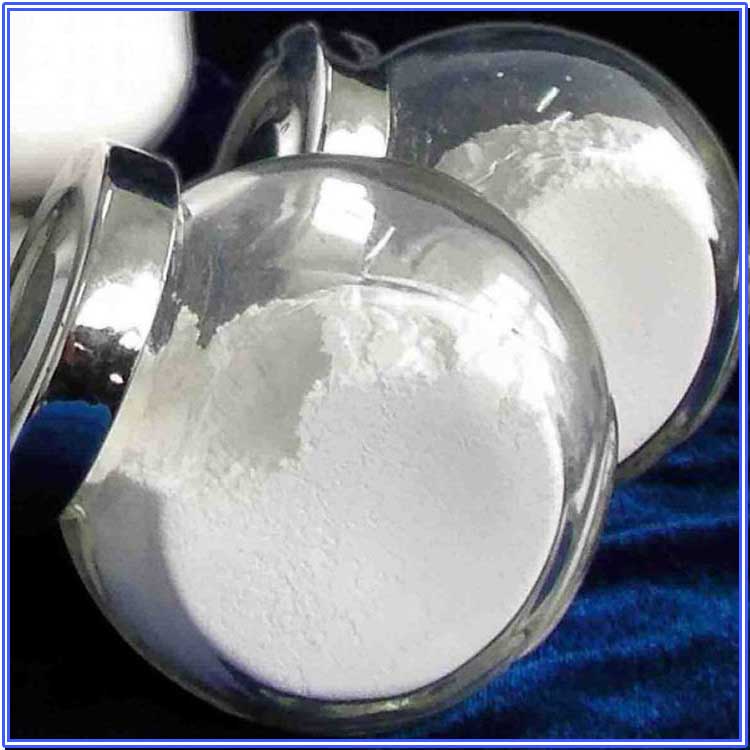Hebei Messi Biology Co., Ltd. stated that hydromagnesite (4MgCO3·Mg(OH)2·4H2O) from Bange Lake in Nagqu, Tibet is a natural basic carbonate mineral with abundant reserves. It has a pure texture, white color, and low impurity content. It is a high-quality mineral raw material for the preparation of magnesium products such as flame retardants, activated magnesium oxide, heavy basic magnesium carbonate, and nano-magnesium hydroxide. However, due to factors such as geography, transportation, and technology, its development and utilization are limited, and there are few related studies in China. Therefore, how to develop and utilize hydromagnesite to prepare a series of high-quality magnesium compounds is the current main research and development work. Nano-magnesium oxide and nano-magnesium hydroxide have unique properties and are important inorganic chemical raw materials. They are widely used in many fields. Therefore, Hebei Meixi Biological Co., Ltd. is committed to using hydromagnesite as a raw material to develop green, environmentally friendly, low-cost, and suitable for industrial production of high-quality nano-magnesium oxide and nano-magnesium hydroxide. Preparation and application.

Hebei Messi Biology Co., Ltd. stated that using hydromagnesite as raw material, nano magnesium oxide with different characteristics was prepared by the process route of “calcination-hydration-calcination”, and no other reagents were added during the experiment. The experiment explored the effects of calcination conditions on sample morphology, crystallinity, grain size and specific surface area. The results showed that increasing temperature or extending calcination time can help improve the crystallinity of magnesium oxide, promote crystal growth, and reduce specific surface area. The experiment finally concluded that mesoporous magnesium oxide with a specific surface area of up to 188.3m/g can be obtained by calcining at 650℃ for 1h; calcining at 850℃ for 4h can obtain rod-shaped and dumbbell-shaped magnesium oxide nanoparticles.
The high specific surface area mesoporous magnesium oxide obtained in the experiment was repeated in the “hydration + calcination” experiment. The results showed that repeated hydration steps can improve the crystallinity of magnesium hydroxide samples and promote grain growth. The calcined magnesium oxide can basically maintain the structure of the precursor. The experiment finally concluded that secondary hydration can obtain nano magnesium hydroxide with hexagonal flakes, which can be calcined at 650℃ for 1h to obtain flake nano magnesium oxide; calcined at 850℃ for 1h to obtain flake mesoporous nano magnesium oxide.
Then, hydromagnesite was used as raw material, and through a variety of methods, it was determined that the process route of “calcination-hydration-calcination-hydrothermal” can prepare nano magnesium hydroxide with regular hexagonal flakes and high dispersion. The experiment explored the hydrothermal conditions, and the results showed that in the hydrothermal process, controlling the hydrothermal conditions can change the growth direction of the crystal, increase the exposure of the 001 crystal face with weak polarity, and reduce the exposure of the 101 crystal face with large polarity. The experiment finally determined that the optimal hydrothermal conditions were the magnesium oxide dosage: 25%, the hydrothermal temperature: 150℃, and the hydrothermal time: 3h. The experiment explored the modification conditions, and the results showed that under the condition of 4% PVP, the growth direction of magnesium hydroxide tended to be consistent, and the dispersibility was effectively improved. Finally, nano magnesium hydroxide with an average diameter of 300nm~400nm, a hexagonal sheet thickness of 40nm~60nm, regular crystal shape and good dispersibility was obtained.
Hebei Messi Biology Co., Ltd. stated that the high specific surface area mesoporous reticular magnesium oxide prepared with hydromagnesite as raw material has the ability to remove heavy metal ions. Taking the adsorption of lead as an example, the experiment explored the effects of adsorbent dosage, adsorption time, temperature and pH on its adsorption performance. It was found that the optimal adsorption conditions were when the adsorbent dosage was 0.05g/L, the adsorption time was 45min, the solution pH was between 6-8, and the adsorption temperature was room temperature. At this time, the removal rate of lead ions can reach more than 99.8%. The adsorption kinetics and isotherm data of lead adsorption by the magnesium oxide adsorbent are highly consistent with the pseudo-secondary model and the Langmuir model, indicating that the maximum adsorption amount of the monolayer chemical adsorption of heavy metal ions is 7431.5mg/g, which is the highest value reported in the current reports on magnesium oxide adsorbents. The adsorption mechanism involving hydroxyl functional groups and ion exchange between magnesium and heavy metal ions on the surface of magnesium oxide was proposed. In addition, the magnesium oxide can adsorb multiple ions at the same time, and has excellent adsorption performance for cadmium, chromium, nickel, arsenic, cobalt, lead, selenium, beryllium, bismuth, copper, iron, manganese, vanadium, zinc, and aluminum ions. The above results show that the magnesium oxide adsorbent has the advantages of high efficiency, low cost, easy preparation, and easy promotion. It is harmless to the environment and is expected to become an excellent adsorbent for rapid removal of heavy metal ions in wastewater.
